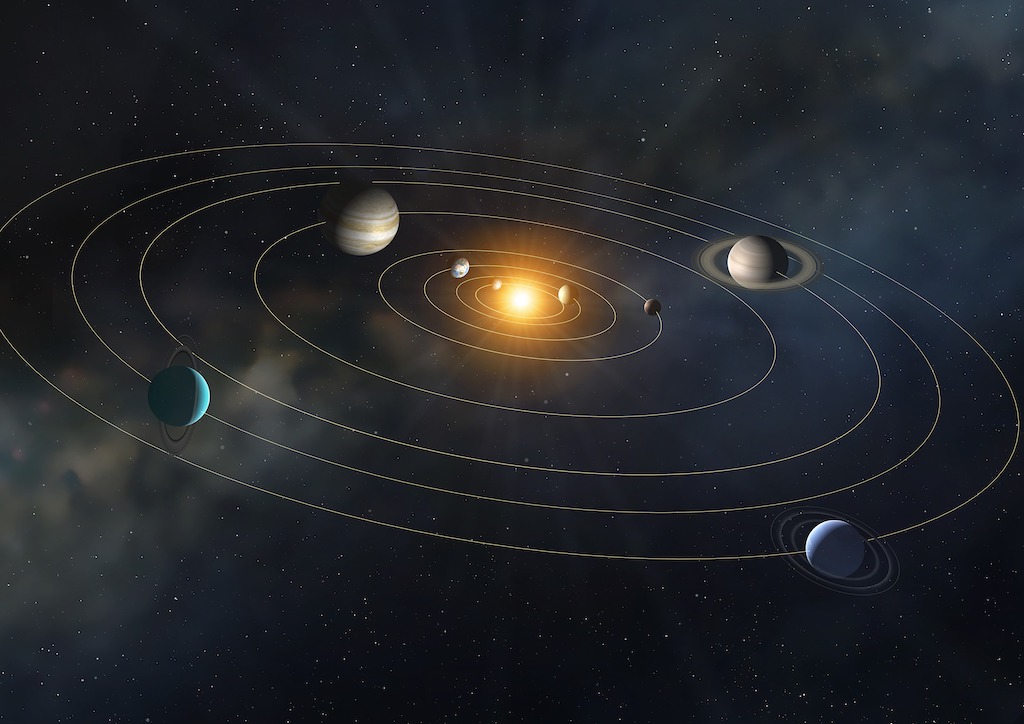Planet Earth: Everything you need to know
Earth is the only planet known to support life. Learn about what Earth is made of and where it came from.
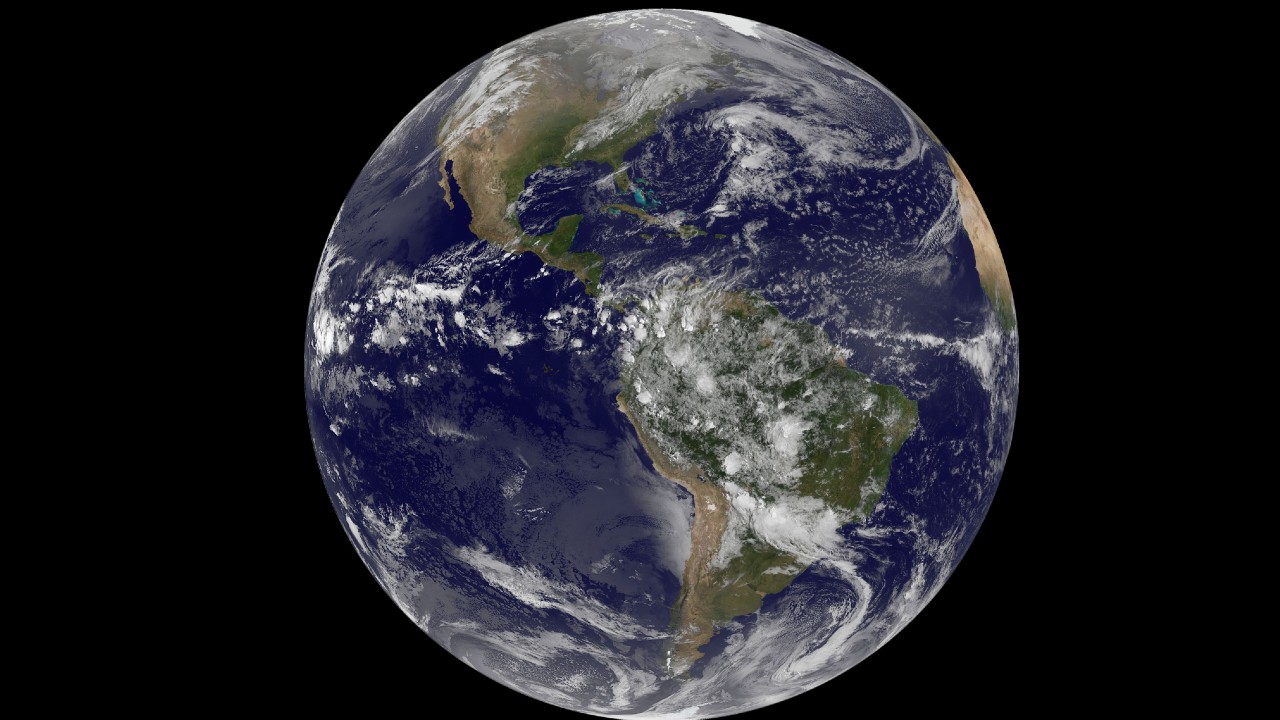
Earth, our home, is the third planet from the sun. While scientists continue to hunt for clues of life beyond Earth, our home planet remains the only place in the universe where we've ever identified living organisms.
Earth is the fifth-largest planet in the solar system. It's smaller than the four gas giants — Jupiter, Saturn, Uranus and Neptune — but larger than the three other rocky planets, Mercury, Mars and Venus.
Earth has a diameter of roughly 8,000 miles (13,000 kilometers) and is mostly round because gravity generally pulls matter into a ball. But the spin of our home planet causes it to be squashed at its poles and swollen at the equator, making the true shape of the Earth an "oblate spheroid."
Related: How big is Earth?
Our planet is unique for many reasons, but its available water and oxygen are two defining features. Water covers roughly 71% of Earth's surface, with most of that water located in our planet's oceans. About a fifth of Earth's atmosphere consists of oxygen, produced by plants.
Related: 15 places on Earth that look exoplanetary
Planet Earth's orbit around the sun
While Earth orbits the sun, the planet is simultaneously spinning around an imaginary line called an axis that runs through the core, from the North Pole to the South Pole. It takes Earth 23.934 hours to complete a rotation on its axis and 365.26 days to complete an orbit around the sun — our days and years on Earth are defined by these gyrations.
Breaking space news, the latest updates on rocket launches, skywatching events and more!
Earth's axis of rotation is tilted in relation to the ecliptic plane, an imaginary surface through the planet's orbit around the sun. This means the Northern and Southern Hemispheres will sometimes point toward or away from the sun depending on the time of year, and this changes the amount of light the hemispheres receive, resulting in the changing seasons.
Earth happens to orbit the sun within the so-called "Goldilocks zone," where temperatures are just right to maintain liquid water on our planet's surface. Earth's orbit is not a perfect circle, but rather a slightly oval-shaped ellipse, similar to the orbits of all the other planets in our solar system. Our planet is a bit closer to the sun in early January and farther away in July, although this proximity has a much smaller effect on the temperatures we experience on the planet's surface than does the tilt of Earth's axis.
Statistics about Earth's orbit, according to NASA:
- Average distance from the sun: 92,956,050 miles (149,598,262 km)
- Perihelion (closest approach to the sun): 91,402,640 miles (147,098,291 km)
- Aphelion (farthest distance from the sun): 94,509,460 miles (152,098,233 km)
- Length of solar day (single rotation on its axis): 23.934 hours
- Length of year (single revolution around the sun): 365.26 days
- Equatorial inclination to orbit: 23.4393 degrees
How did Earth form?
Scientists think Earth was formed at roughly the same time as the sun and other planets some 4.6 billion years ago when the solar system coalesced from a giant, rotating cloud of gas and dust known as the solar nebula. As the nebula collapsed under the force of its own gravity, it spun faster and flattened into a disk. Most of the material in that disk was then pulled toward the center to form the sun.
Other particles within the disk collided and stuck together to form ever-larger bodies, including Earth. Scientists think Earth started off as a waterless mass of rock.
"It was thought that because of these asteroids and comets flying around colliding with Earth, conditions on early Earth may have been hellish," Simone Marchi, a planetary scientist at the Southwest Research Institute in Boulder, Colorado, previously told Space.com.
However, analyses of minerals trapped within ancient microscopic crystals suggest that there was liquid water already present on Earth during its first 500 million years, Marchi said.
Radioactive materials in the rock and increasing pressure deep within the Earth generated enough heat to melt the planet's interior, causing some chemicals to rise to the surface and form water, while others became the gases of the atmosphere. Recent evidence suggests that Earth's crust and oceans may have formed within about 200 million years after the planet took shape.
Related: 10 Earth impact craters you must see
Earth FAQs answered by an expert
We asked Jack Wright an ESA Internal Research Fellow a few commonly asked questions about our planet, Earth.

Jack Wright, is an Internal Research Fellow with the European Space Agency (ESA).
What sets Earth apart from other planets in the solar system?
From what we know so far, Earth is the only planet that hosts life and the only one in the Solar System with liquid water on the surface. Earth is also the only planet in the solar system with active plate tectonics, where the surface of the planet is divided into rigid plates that collide and move apart, causing earthquakes, mountain building, and volcanism. Sites of volcanism along Earth's submarine plate boundaries are considered to be potential environments where life could have first emerged.
What makes our planet uniquely suitable to host life?
Earth is the right distance from the sun, such that liquid water has been stable in significant volumes over much of the planet's lifetime. It has the right chemical ingredients for life (e.g. water and carbon), and chemical cycling (such as between the planet's interior and oceans by volcanism and other geological activity) provides chemical pathways for life to extract energy to survive.
Additional factors that have allowed the evolution of complex life are an oxygenated atmosphere, and protection from solar radiation by its magnetic field.
Which planet is closest to Earth in terms of distance?
New findings show that considering the average distance, Mercury is the nearest planet to Earth; considering the smallest possible distance, instead, Venus is closest.
Is Mercury the most similar to ours in the solar system?
No. Mercury has no atmosphere and it has an old surface covered in impact craters, so it is very unlike Earth. One similarity is that Mercury and Earth both have internally generated magnetic fields. Venus and Earth are very similar in size. There is emerging evidence for active volcanism on Venus, however, its atmosphere is up to 100 times denser than Earth's and is mostly carbon dioxide with sulfuric acid clouds. The surface of Saturn's moon Titan physically resembles Earth's, with mountains, rivers, lakes, and seas. The difference is that Titan's mountains are made from water ice, which is as strong as rock under its surface temperature (-180°C), and the rivers and seas are full of hydrocarbons.
How many planets in the Milky Way could have conditions like Earth?
Scientists estimated that 1 in 5 stars like our sun has one Earth-like planet orbiting around them, which may support life. Considering that there are more than 200 billion stars in our Milky Way, there might be an estimated 40 billion planets that might support life in our galaxy.
Why is it vital to preserve our planet?
Earth observation from space provides objective coverage across both space and time. The same space-based sensor gathers data from sites across the world, including places too remote or otherwise inaccessible for ground-based data acquisition.
And because Earth observation satellites remain in place for long periods of time, they can highlight environmental changes occurring gradually. Looking back through archived satellite data shows us the steady clearing of the world's rainforests, an apparent annual rise in sea level approaching 2 mm a year, and the increase of atmospheric pollution.
In the long term, this monitoring of the Earth's environment will enable a reliable assessment of the global impact of human activity and the likely future extent of climate change.
The scientific evidence of global climate change is irrefutable. The consequences of a warming climate are far-reaching — affecting freshwater resources, global food production, and sea level and triggering an increase in extreme weather events. In order to tackle climate change, scientists and decision-makers need reliable data to understand how our planet is changing.
For more than three decades, Earth-observing satellites have been providing the facts needed to address the challenges of our changing world.
Earth is the only naturally habitable planet for complex (e.g. human) life in the solar system. The consequences of a warming climate are far-reaching and are already threatening some people's ways of life and damaging wider biodiversity. If Earth becomes uninhabitable we have nowhere else to go. Colonizing the Moon and Mars is no substitute for preserving Earth. The Moon and Mars cannot sustain Earth's population of humans and other organisms.
Earth's internal structure
Earth's core is about 4,400 miles (7,100 km) wide, slightly larger than half the Earth's diameter and about the same size as Mars. The outermost 1,400 miles (2,250 km) of the core are liquid, while the inner core is solid. That solid core is about four-fifths as big as Earth's moon, at some 1,600 miles (2,600 km) in diameter. The core is responsible for the planet's magnetic field, which helps to deflect harmful charged particles shot from the sun.
Above the core is Earth's mantle, which is about 1,800 miles (2,900 km) thick. The mantle is not completely stiff but can flow slowly. Earth's crust floats on the mantle much as a piece of wood floats on water. The slow motion of rock in the mantle shuffles continents around and causes earthquakes, volcanoes and the formation of mountain ranges.
Related: Earth's layers: Exploring our planet inside and out
Above the mantle, Earth has two kinds of crust. The dry land of the continents consists mostly of granite and other light silicate minerals, while the ocean floors are made up mostly of a dark, dense volcanic rock called basalt. Continental crust averages some 25 miles (40 km) thick, although it can be thinner or thicker in some areas. Oceanic crust is usually only about 5 miles (8 km) thick. Water fills in low areas of the basalt crust to form the world's oceans.
Earth gets warmer toward its core. At the bottom of the continental crust, temperatures reach about 1,800 degrees Fahrenheit (1,000 degrees Celsius), increasing about 3 degrees F per mile (1 degree C per km) below the crust. Geologists think the temperature of Earth's outer core is about 6,700 to 7,800 degrees F (3,700 to 4,300 degrees C) and that the inner core may reach 12,600 degrees F (7,000 degrees C) — hotter than the surface of the sun.
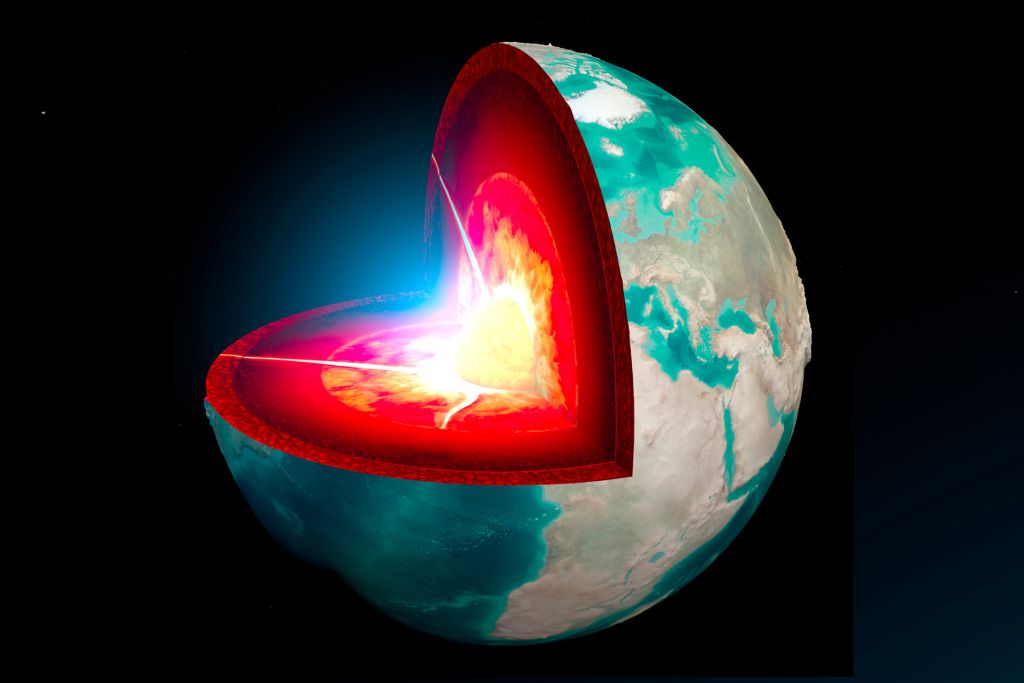
Earth's magnetic field
Earth's magnetic field is generated by currents flowing in Earth's outer core. The magnetic poles are always on the move, with the magnetic North Pole accelerating its northward motion to 24 miles (40 km) annually since tracking began in the 1830s. It will likely exit North America and reach Siberia in a matter of decades.
Earth's magnetic field is changing in other ways, too. Globally, the magnetic field has weakened 10 percent since the 19th century, according to NASA.
But these changes are mild compared to what Earth's magnetic field has done in the past. A few times in every million years or so, the field completely flips, with the North and the South poles swapping places. The magnetic field can take anywhere from 100 to 3,000 years to complete the flip, Space.com previously reported.
The strength of Earth's magnetic field decreased by about 90 percent when a field reversal occurred in ancient past, according to Andrew Roberts, a professor at the Australian National University. The drop makes the planet more vulnerable to solar storms and radiation, which could significantly damage satellites as well as communication and electrical infrastructure.
"Hopefully, such an event is a long way in the future and we can develop future technologies to avoid huge damage," Roberts said in a statement.
When charged particles from the sun get trapped in Earth's magnetic field, they smash into air molecules above the magnetic poles, causing them to glow. This phenomenon is known as the auroras, the northern and southern lights.
Earth's atmosphere
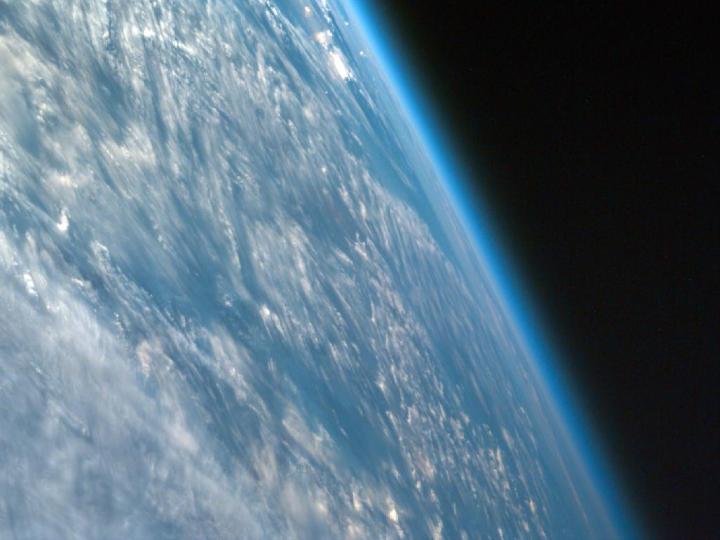
Earth's atmosphere is roughly 78 percent nitrogen and 21 percent oxygen, with trace amounts of water, argon, carbon dioxide and other gases. No other planet in the solar system has an atmosphere loaded with free oxygen, which is vital to one of the other unique features of Earth: life.
Air surrounds Earth and becomes thinner farther from the surface. Roughly 100 miles (160 km) above Earth, the air is so thin that satellites can zip through the atmosphere with little resistance. Still, traces of atmosphere can be found as high as 370 miles (600 km) above the planet's surface.
The lowest layer of the atmosphere is known as the troposphere, which is constantly in motion and why we have weather. Sunlight heats the planet's surface, causing warm air to rise into the troposphere. This air expands and cools as air pressure decreases, and because this cool air is denser than its surroundings, it then sinks and gets warmed by the Earth again.
Above the troposphere, some 30 miles (48 km) above the Earth's surface, is the stratosphere. The still air of the stratosphere contains the ozone layer, which was created when ultraviolet light caused trios of oxygen atoms to bind together into ozone molecules. Ozone prevents most of the sun's harmful ultraviolet radiation from reaching Earth's surface, where it can damage and mutate life.
Water vapor, carbon dioxide and other gases in the atmosphere trap heat from the sun, warming Earth. Without this so-called "greenhouse effect," Earth would probably be too cold for life to exist, although a runaway greenhouse effect led to the hellish conditions of Venus' current surface.
Earth-orbiting satellites have shown that the upper atmosphere actually expands during the day and contracts at night due to heating and cooling.
Earth's chemical composition
Oxygen is the most abundant element in rocks in Earth's crust, composing roughly 47 percent of the weight of all rock. The second most abundant element is silicon, at 27 percent, followed by aluminum, at 8 percent; iron, at 5%; calcium, at 4%; and sodium, potassium and magnesium, at about 2% each.
Earth's core consists mostly of iron and nickel and potentially smaller amounts of lighter elements, such as sulfur and oxygen. The mantle is made of iron and magnesium-rich silicate rocks (the combination of silicon and oxygen is known as silica, and minerals that contain silica are known as silicate minerals).
Earth's moon
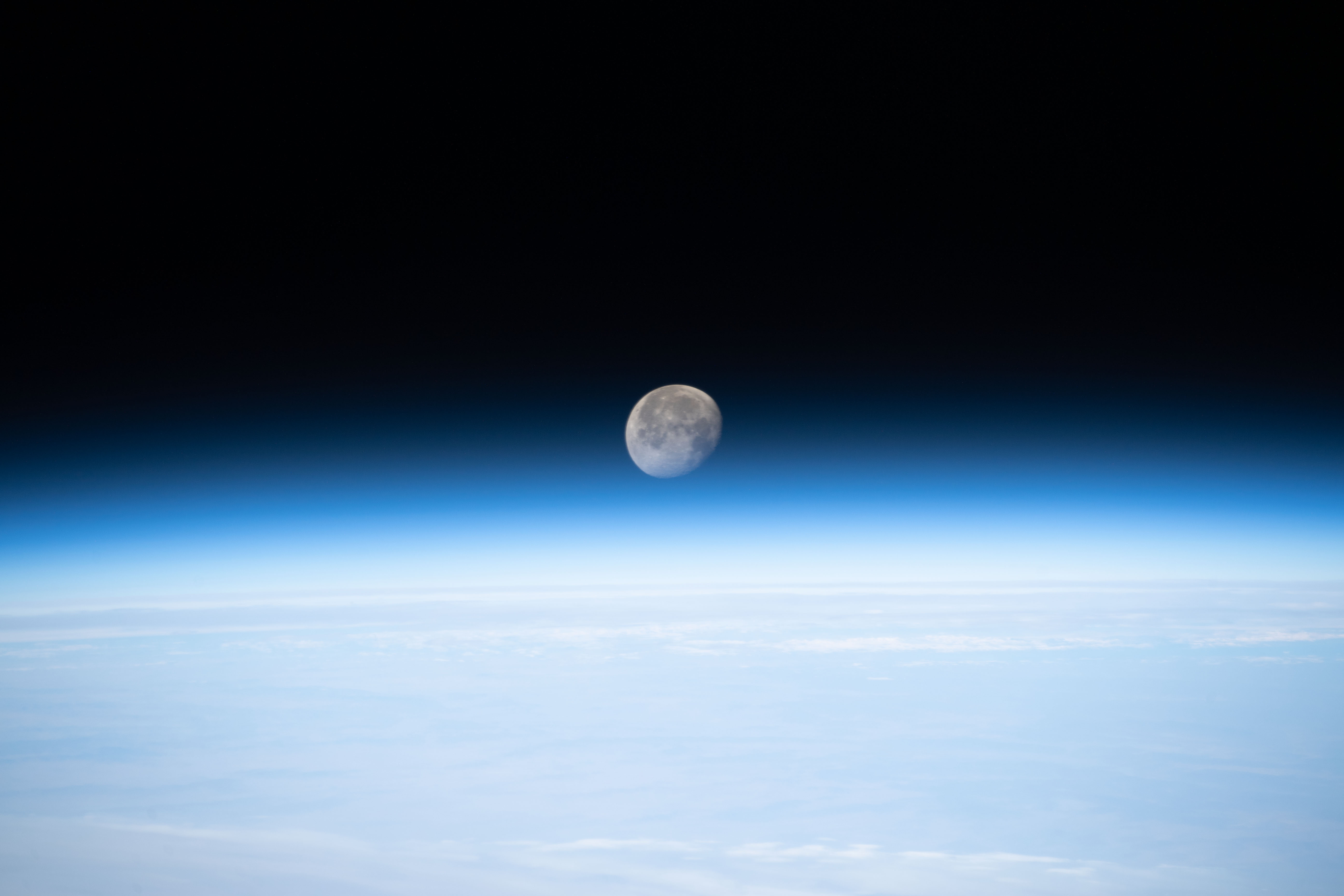
Earth's moon is 2,159 miles (3,474 km) wide, about one fourth of Earth's diameter. Our planet has one moon, while Mercury and Venus have none and all the other planets in our solar system have two or more.
The leading explanation for how Earth's moon formed is that a giant impact knocked the raw ingredients for the moon off the primitive, molten Earth and into orbit. Scientists have suggested that the object that hit the planet had roughly 10% the mass of Earth — about the size of Mars.
Earth observation
Astronauts and scientists have learned a lot about our planet by leaving it. From 240 miles (408 kilometers) away, aboard the International Space Station (ISS), astronauts are able to observe the thin, fragile atmosphere of Earth.
Meanwhile, satellites orbiting Earth can track the planet's responses to changes —caused naturally and by humans– on a greater scale. Satellites have been launched to detect changes in the hole in the ozone layer, monitor cloud coverage and weather patterns and manage humans' use of Earth's resources.
Life on Earth
Earth is the only planet in the universe known to possess life. The planet boasts several million described species, living in habitats ranging from the bottom of the deepest ocean to a few miles up into the atmosphere. Researchers think far more species remain that have yet to be described to science.
Researchers suspect that other candidates for hosting life in our solar system — such as Saturn's moon Titan or Jupiter's moon Europa — could house primitive living creatures. Scientists have yet to precisely nail down exactly how our primitive ancestors first showed up on Earth, although most believe that a chemical soup on the planet gave rise to the building blocks of living organisms. (The precise set of circumstances necessary to create life from a lifeless planet are pretty unlikely, according to previous Space.com report, so it seems we got very lucky.)
Read more from Live Science: How did life arise on Earth?
Another theory suggests that life first evolved on the nearby planet Mars, which could once have been habitable, then traveled to Earth on meteorites hurled from the Red Planet by impacts from other space rocks.
"It's lucky that we ended up here, nevertheless, as certainly Earth has been the better of the two planets for sustaining life," biochemist Steven Benner, of the Westheimer Institute for Science and Technology in Florida, told Space.com. "If our hypothetical Martian ancestors had remained on Mars, there might not have been a story to tell."
Additional resources
- Read more about our planet in "A Brief History of Earth: Four Billion Years in Eight Chapters" (Custom House, 2021) by Andrew H. Knoll.
- Check out NASA's page all about planet Earth.
- Consider a different perspective from Discover Magazine about what makes Earth unique: its minerals.

Charles Q. Choi is a contributing writer for Space.com and Live Science. He covers all things human origins and astronomy as well as physics, animals and general science topics. Charles has a Master of Arts degree from the University of Missouri-Columbia, School of Journalism and a Bachelor of Arts degree from the University of South Florida. Charles has visited every continent on Earth, drinking rancid yak butter tea in Lhasa, snorkeling with sea lions in the Galapagos and even climbing an iceberg in Antarctica. Visit him at http://www.sciwriter.us
